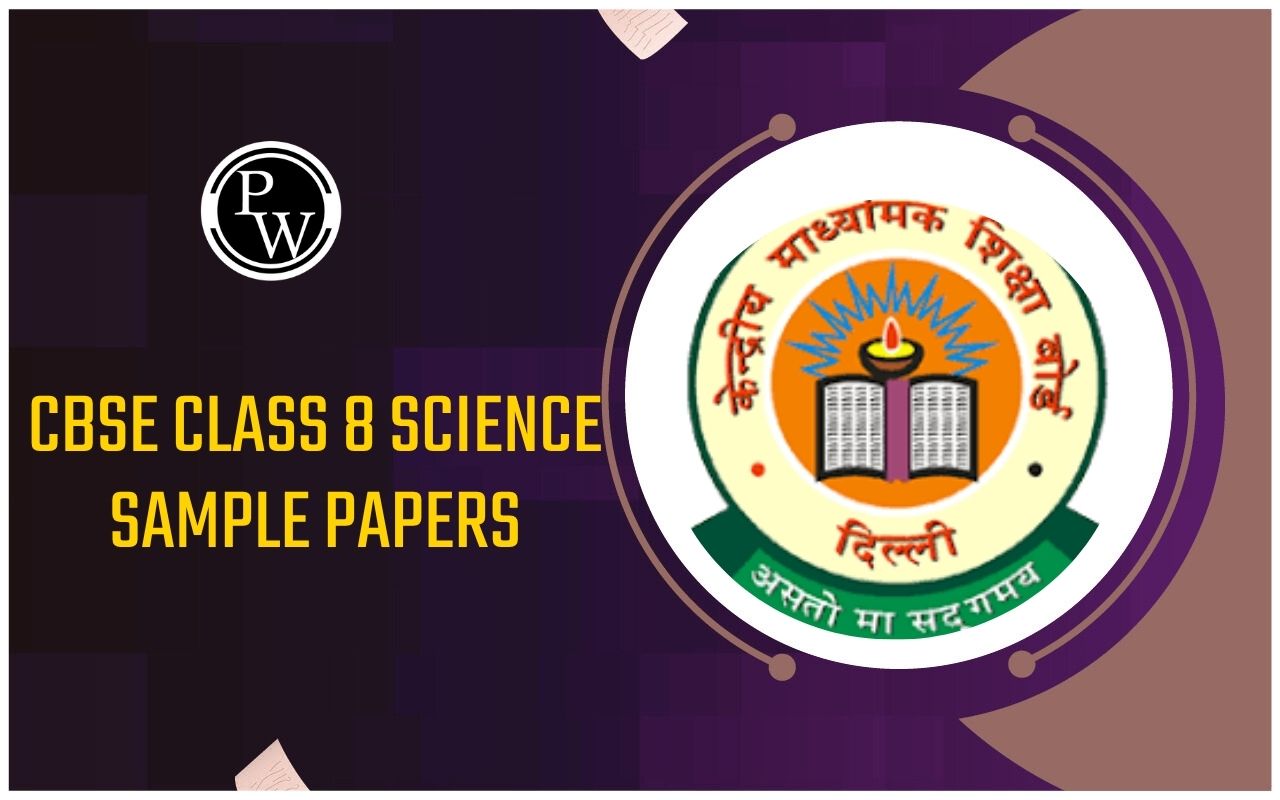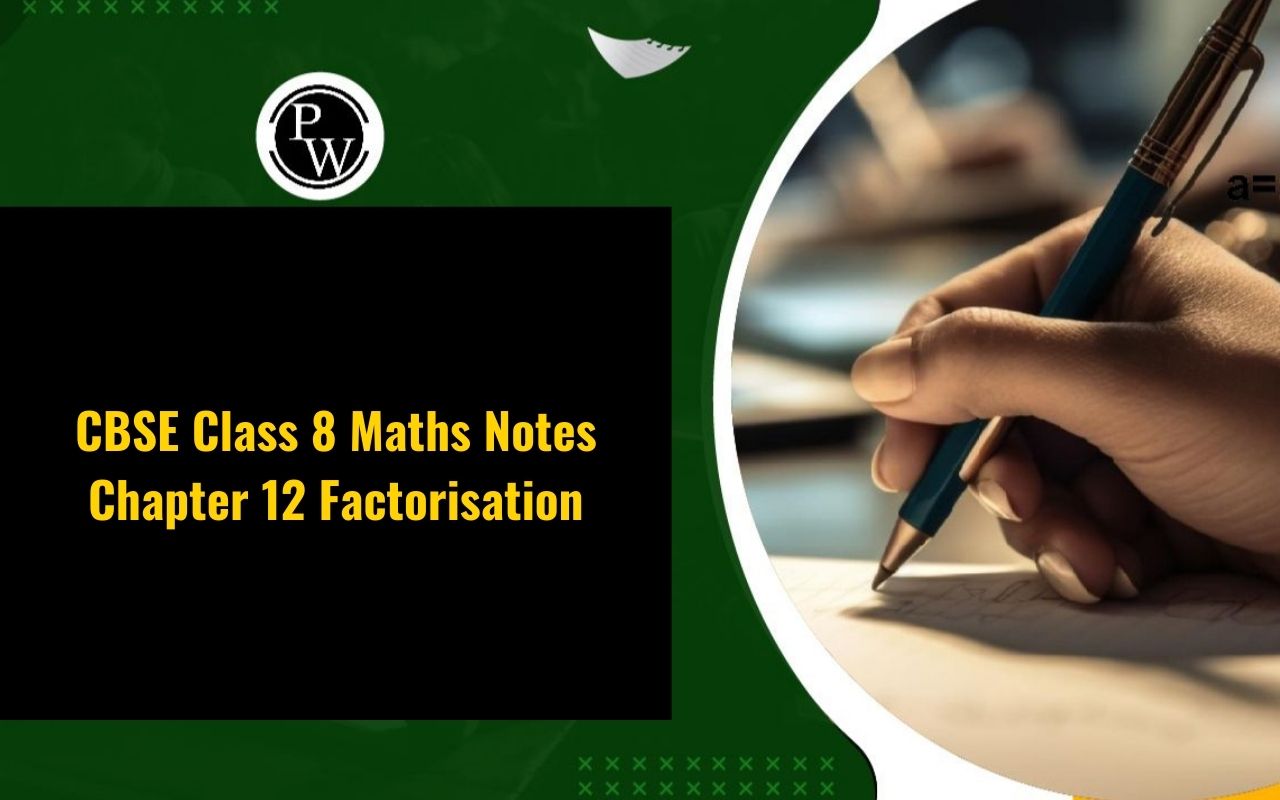

CBSE Class 8 Maths Notes Chapter 8: CBSE Class 8 Maths Chapter 8 Algebraic Expressions and Identities focuses on helping students understand the formation and manipulation of algebraic expressions, including monomials, binomials, and polynomials.
These notes provide a detailed overview of the concepts, ensuring that students can apply these identities in problem-solving and build a strong foundation in algebra.CBSE Class 8 Maths Notes Chapter 7 Algebraic Expressions and Identities Overview
These notes on CBSE Class 8 Maths Chapter 8 Algebraic Expressions and Identities are prepared by the subject experts of Physics Wallah. They cover important concepts like how to form algebraic expressions and use key identities. The notes are written in a simple way to help students understand the topics easily and build a strong base in algebra. With clear explanations and examples these notes are a great resource for learning the chapter.CBSE Class 8 Maths Notes Chapter 8 Algebraic PDF Download
The PDF link for CBSE Class 8 Maths Notes Chapter 8 Algebraic Expressions and Identities is available below. It is a valuable resource for students providing clear examples and step-by-step solutions to help them grasp the concepts effectively. Access the PDF to enhance your understanding and practice of algebraic expressions and identities.CBSE Class 8 Maths Notes Chapter 8 Algebraic Expressions and Identities PDF
CBSE Class 8 Maths Notes Chapter 8 Algebraic Expressions and Identities
Here are the notes for CBSE Class 8 Maths Chapter 8 Algebraic Expressions and Identities. Algebraic expressions are combinations of variables, constants, and mathematical operators without an equal sign, unlike equations. These expressions are made up of terms, which are the building blocks. A term can be a constant, a variable, or a product of both. The factors of a term are the variables or constants that multiply to form that term, and the coefficient is the numerical factor in a term. Algebraic expressions can be classified into monomials (one term), binomials (two terms), and polynomials (more than two terms). When adding or subtracting algebraic expressions, only like terms—those with the same variables and powers can be combined. Multiplication of expressions involves using the distributive property, which helps in expanding and simplifying expressions. These concepts are fundamental for solving algebraic problems and understanding the structure of algebraic expressions.Algebraic Expressions
Algebraic expressions are mathematical phrases that consist of variables, constants, and operators, but they do not include an equal sign or sides like algebraic equations. These expressions represent a value or relationship between variables and constants.Examples of algebraic expressions are : 2 x + 4 , 7 y − 3 + 6 x , 3 t 2 + 4 t − 1 .
Factors
Factors are the individual variables or constants that, when multiplied together, form a term in an algebraic expression. For example, in the term 8pq , the factors are 8 , and . Each factor contributes to the overall product that makes up the term. Factors are considered to be in their simplest form and cannot be broken down or factorized further. They are essential building blocks in constructing algebraic expressions, and understanding them helps in simplifying and manipulating these expressions.Algebraic Identities
- ( a + b ) 2 = a 2 + 2 a b + b 2
- ( a − b ) 2 = a 2 − 2 a b + b 2
- ( a + b ) ( a − b ) = a 2 − b 2
Addition and Subtraction of Algebraic Expressions
When adding or subtracting algebraic expressions, it is essential to combine like terms. Like terms are terms that have the same variables raised to the same powers, but may have different numerical coefficients. To add or subtract algebraic expressions:- Identify Like Terms : Group terms that have identical variable parts.
- Add or Subtract Coefficients : Combine the numerical coefficients of the like terms.
Multiplication of Algebraic Expressions
Multiplication of Monomials
When multiplying two monomials, follow these steps:Multiply Numerical Coefficients : Multiply the numerical coefficients of the monomials to find the new numerical coefficient of the product.
Combine Like Variables : For each variable, add the exponents from both monomials. This results in the new exponent for that variable in the product.
Multiplying two monomials:
- x × 3 y = x × 3 × y = 3 × x × y = 3 x y
- 3 x × 2 y = 3 × x × 2 × y = 3 × 2 × x × y = 6 x y
- 5 x × ( − 2 z ) = 5 × ( − 2 ) × x × z = − 10 x z
Multiplying three or more monomials:
- 2 x × 3 y × 5 z = ( 2 x × 3 y ) × 5 z = 6 x y × 5 z = 30 x y z
- 4 x y × 5 x 2 y 2 × 6 x 3 y 3 = ( 4 x y × 5 x 2 y 2 ) × 6 x 3 y 3 = 20 x 3 y 3 × 6 x 3 y 3 = 120 x 6 y 6
CBSE Class 8 Maths Notes Chapter 8 FAQs
What is an algebraic expression?
What are terms in an algebraic expression?
What is a coefficient?
What are like terms?
How do you add or subtract algebraic expressions?











